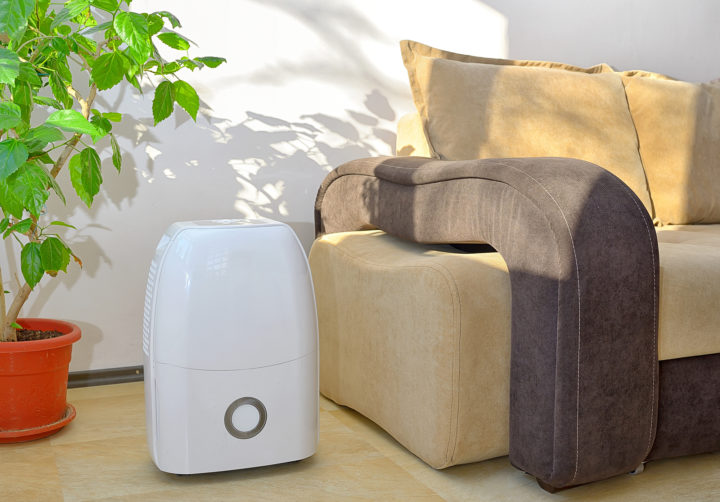The following contribution is from another author.
Indoor air quality (IAQ) is a crucial aspect of your daily life, as a significant portion of your time is spent indoors. The quality of the air individuals breathe can exert a profound influence on their health and well-being. One often overlooked factor in IAQ is humidity, which is vital in determining overall comfort and healthiness in indoor environments.
This article explores the intricate connection between humidity and indoor air quality, delving into the effects of low and high humidity levels and discussing how to maintain an optimal indoor environment.
Humidity And Indoor Air Quality
Humidity refers to the amount of moisture present in the air. It’s typically measured as relative humidity (RH) and is expressed as a percentage. The ideal range for indoor relative humidity falls between 30% and 60%. Straying outside this range can have various consequences for indoor air quality.
Say you have a basement in your home for storage and recreation. During the rainy season, the relative humidity in your basement tends to soar beyond the recommended range. It’s not uncommon to see RH levels reaching 75% or higher. Initially, this may not seem like a significant issue, but it can lead to a cascade of problems related to indoor air quality, such as mold and mildew growth.
To address this situation, it’s best to invest in a high-capacity dehumidifier specifically designed for large basement spaces. This device works diligently to remove excess moisture from the air, gradually bringing the relative humidity to a comfortable and safe range of 40-50%.
Effects Of High Humidity
High humidity levels can lead to a host of IAQ problems. Excess moisture in the air provides an ideal breeding ground for mold and dust mites, two common indoor allergens. Mold spores can become airborne, causing respiratory issues and allergies. Dust mites thrive in humid environments, exacerbating asthma and allergy symptoms. Additionally, high humidity can make indoor spaces feel uncomfortably warm and stuffy, leading to discomfort and potential health issues like heat exhaustion.
To mitigate the adverse effects of high humidity, it’s essential to use tools like dehumidifiers. A dehumidifier is designed to remove excess moisture from the air, thus lowering humidity levels. It can be especially useful during the hot summer months when humidity rises.
Some modern dehumidifiers have cooling functions, allowing you to simultaneously dehumidify and cool a room, creating a more comfortable indoor environment. Using a dehumidifier to cool a room is an energy-efficient way to combat high humidity and elevated temperatures, enhancing indoor air quality and comfort.
Effects Of Low Humidity
Low humidity can have a range of adverse effects on indoor air quality and the well-being of occupants. These effects include the following:
- Skin discomfort: Dry air can lead to skin irritation, chapped lips, and a dry throat, causing discomfort and reducing productivity.
- Respiratory irritation: Low humidity can irritate the mucous membranes of the respiratory tract, making individuals more susceptible to respiratory infections. It can exacerbate pre-existing respiratory conditions like asthma and bronchitis.
- Structural damage: Dry air can cause wooden furniture and flooring to crack and warp, potentially leading to costly repairs or replacements.
- Electrical issues: Low humidity can also affect electronic equipment by generating static electricity, increasing the risk of damage to sensitive electronics.
To address these problems associated with low humidity, a humidifier can be employed. A humidifier is a device that adds moisture to the air, effectively increasing indoor humidity levels.
This can be particularly beneficial during the winter months when indoor air tends to be drier due to heating systems. Maintaining an optimal humidity level can enhance indoor air quality and create a more comfortable living environment while mitigating the adverse effects of low humidity.
Balancing Humidity For Optimal Indoor Air Quality
Achieving the right balance of humidity is essential for optimal indoor air quality. To determine the ideal humidity level for your space, consider factors such as climate, season, and personal comfort preferences. Regularly monitoring indoor humidity with a hygrometer can help you maintain the desired levels.
In addition to using dehumidifiers and humidifiers, there are other strategies to improve indoor air quality through humidity control:
- Ventilation: Proper ventilation is key to maintaining healthy indoor air quality. Ensuring adequate ventilation, especially in areas prone to moisture accumulation, like bathrooms and kitchens, can help prevent humidity-related issues.
- Sealing Leaks: Addressing any leaks or gaps in the building’s envelope can help prevent outdoor humidity from entering the indoor environment and causing problems.
- Air Purification: Employing air purifiers with high-efficiency particulate air (HEPA) filters can help remove airborne allergens and pollutants, enhancing IAQ in conjunction with humidity control.
By implementing these strategies alongside humidity management, you can create a comprehensive approach to maintaining a comfortable and healthy indoor environment for you and your family.
Conclusion
Humidity is an integral component of indoor air quality, and maintaining the right balance is crucial for creating a healthy and comfortable indoor environment. Whether dealing with high humidity in the summer or dry air in the winter, using tools like dehumidifiers and humidifiers can help you optimize indoor humidity levels and improve overall air quality. By proactively managing indoor humidity, you can ensure that your indoor spaces promote well-being and comfort year-round.

















Maintaining the right balance of humidity for indoor air quality is crucial as this post highlights. I appreciate the explanation of the effects of both high and low humidity. It is a comprehensive guide to improving the air we breathe indoors.
Black Car Services in Woburn MA